Jacksonville, Fl. — The “Buresh Bottom Line”: Always be prepared!.....First Alert Hurricane Survival Guide... City of Jacksonville Preparedness Guide... Georgia Hurricane Guide.
STAY INFORMED: Get the * FREE * First Alert Weather app
FREE NEWS UPDATES, ALERTS: Action News Jax app for Apple | For Android
WATCH “The Ins & Outs of Hurricane Season”
WATCH “Preparing for the Storm”
READ the First Alert Hurricane Center “Survival Guide”
***** ALWAYS CHECK & RE-CHECK THE LATEST FORECAST & UPDATES! *****
REMEMBER WHEN A TROPICAL STORM OR HURRICANE IS APPROACHING: Taping windows is *NOT* helpful & will not keep glass from breaking... & realize the cone is the average forecast error over a given time - out to 5 days - & *does not* indicate the width of the storm &/or damage therefore do not become fixated on the center of a tropical system.
“Ida” summary in the “Buresh Blog” * here *.
The story through the Labor Day holiday weekend will be large & powerful hurricane Larry, but the good (great!) news is that the storm will be far from any land areas with the exception of Bermuda. A second detail to keep track of will be over the Central & Western Gulf of Mexico.
First things first: T.S “Larry” was upgraded Wed. becoming a hurricane early Thu. & became a Cat. 3 Fri. evening - the 3rd “major” hurricane of the season. 1969, 2004 & 2005 were the only other seasons since the mid 1960s to have as many as three Cat. 3+ hurricanes by Sept. 3rd.
*BUT* it continues to like Larry will stay far to the east over the open Atlantic through its lifetime thanks to a displaced - to the northeast - Bermuda High. Larry will get uncomfortably close to Bermuda about the middle of the upcoming week with at least some impact likely & possibly a significant hit though the current indications are that Larry goes just east of the island.
And despite the hurricane’s considerable distance from any mainland, Larry will be large enough/strong enough to push an easterly swell to the Caribbean & east coast of the U.S. enhancing the rip current risk late in the holiday weekend into next week. The eye of the hurricane will reach Jacksonville’s latitude - about 30 degrees N - by Tue. night/Wed. but hundreds of miles to the east.
There should be some cycling & recycling with fluctuations in intensity due to eyewall replacement cycles. It’ll be interesting to see if Larry tries to go annular.
In any case, Larry is the 5th hurricane of the Atlantic season... the 4th just since Aug. 18th!.... & the first time three Atlantic Basin hurricanes have formed within the period from Aug. 18th to Sept. 2nd.
Dr. Phil Klotzbach reports only twelve or more tropical storms have occurred within the Atlantic Basin by Sept. 1st 5 times: 1995, 2005, 2011, 2012 & 2020. (Of course, some credit to far better “detecting” means since the advent of satellite photos in the 1960s).


For right now, the Bermuda High across the Atlantic is displaced to the east & northeast (see the 500mb forecast for Fri. below) - & generally weaker - into at least early Sept. - important for any potential long track tropical systems coming out of the deep tropics. If the Bermuda High stays weaker, it will be difficult for a long track tropical cyclone to make it all the way across the Atlantic... at least over the next week to 10 days or so. HOWEVER, such a pattern would not help any possible tropical development more to the west.... say - W. Caribbean, Gulf of Mexico or SW Atlantic, etc. So it’s not time to let your guard down.


Beautiful satellite view of the Atlantic & hurricane Larry. Notice Larry is imbedded in a huge plume of Saharan dust (light gray colors) but is managing to still thrive. Moral of the story: African dust doesn’t necessarily just shut down the tropics - especially later in the season when shear & water temps. are much more optimal for tropical cyclones. Not to mention that weaker waves often just simply “wait it out” until they are in a more favorable environment to do their “thing”.

Another area to watch: there continue to be some hints of possible gradual tropical development over the Western Caribbean or - more likely - Western/Central Gulf over the next 3-6 days or so evolving from an area of disorganized but persistent storminess over the SW Caribbean moving over Central America & the Yucatan Peninsula (IR sat image below). This will be something to keep a close eye on with potential impacts - it would appear - for Mexico or *possibly* South Texas in the longer range & *possibly* to other parts of the Gulf Coast later in the week IF anything at all does develop. Proximity to land should limit much development through Monday not to mention marginal atmospheric (shear) conditions. The GFS model does show more movement to the east/northeast vs. the European which has been especially erratic in its solutions (output), so we’ll keep a close eye on this area through next week. The UKMET model shows virtually nothing. Ultimately... I believe at least weak low pressure/a tropical disturbance will develop & where it goes will depend on the development of upper level high pressure building over the U.S.

Some forecast models have no disturbance developing so the spaghetti plots for ‘91-L’ show limited output:



The peak of the hurricane season (Sept. 10) is less than one week away & ocean temps. remain “fit” to help maintain tropical cyclones.
Sea surface temps. across the Atlantic are now near to above avg. across much of the basin (2nd image below) & - even more importantly - deep oceanic heat content (which helped “feed” Ida) is impressive & the “equivalent oceanic heat content” - namely depth averaged temperature in the upper 300 m (~984 feet) - is even more impressive all the way from Africa to the Gulf of Mexico. Such an ocean water temp. pattern is conducive to long track deep tropical Atlantic tropical cyclones & can lead to a more favored regime for rapid intensification cycles. From an AMS research paper in ‘08 Mainelli, DeMaria, Shay, Goni: “Results show that for a large sample of Atlantic storms, the OHC variations have a small but positive impact on the intensity forecasts. However, for intense storms, the effect of the OHC is much more significant, suggestive of its importance on rapid intensification. The OHC input improved the average intensity errors of the SHIPS forecasts by up to 5% for all cases from the category 5 storms, and up to 20% for individual storms, with the maximum improvement for the 72–96-h forecasts. The statistical results obtained indicate that the OHC only becomes important when it has values much larger than that required to support a tropical cyclone.” More recent research continues to indicate similar correlations.
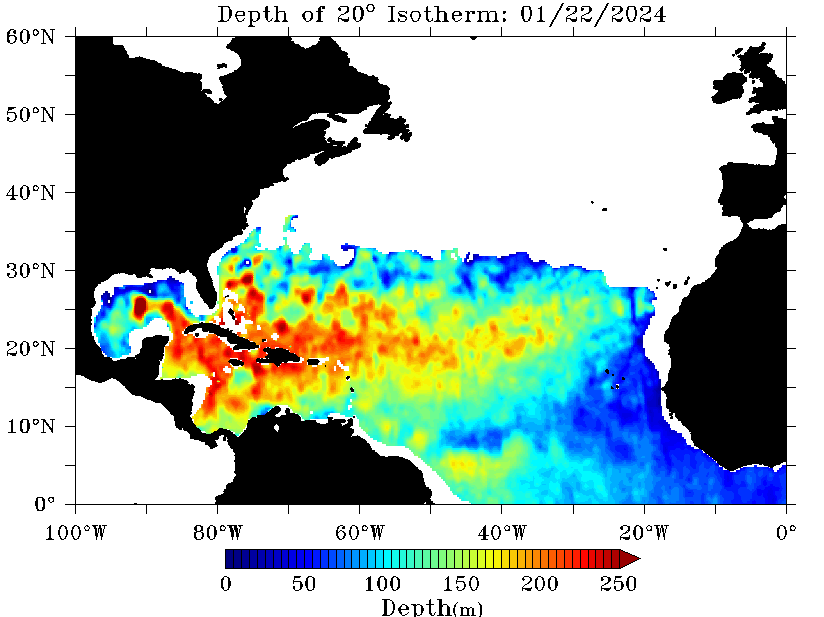

September is historically the prime month for tropical cyclones across the Atlantic Basin:




Saharan dust. Dry air - yellow/orange/red/pink. Widespread dust is indicative of dry air that can impede the development of tropical cyclones. However, sometimes “wanna’ be” waves will just wait until they get to the other side of the plume then try to develop if everything else happens to be favorable. In my personal opinion, way too much is made about the presence of Saharan dust & how it relates to tropical cyclones.

2021 names..... “Mindy” is the next name on the Atlantic list (names are picked at random by the World Meteorological Organization... repeat every 6 years... historic storms are retired (Florence & Michael in ’18... Dorian in ’19 & Laura, Eta & Iota in ‘20). Last year - 2020 - had a record 30 named storms. The WMO decided beginning in 2021 that the Greek alphabet will be no longer used & instead there will be a supplemental list of names if the first list is exhausted (has only happened twice - 2005 & 2020). More on the history of naming tropical cyclones * here *.





East Atlantic:





Mid & upper level wind shear (enemy of tropical cyclones) analysis (CIMMS). The red lines indicate strong shear:
Water vapor imagery (dark blue indicates dry air):

Deep oceanic heat content continues to increase across the Gulf, Caribbean & deep tropical Atlantic & has become pretty impressive from the Central/NW Caribbean into the Gulf of Mexico:

Sea surface temp. anomalies:


SE U.S. surface map:

Surface analysis centered on the tropical Atlantic:

Surface analysis of the Gulf:

Caribbean:

Atlantic Basin wave forecast for 24, 48 & 72 hours respectively:




The East Pacific:

West Pacific IR satellite:

Global tropical activity:

Cox Media Group
:quality(70)/cloudfront-us-east-1.images.arcpublishing.com/cmg/WW5AJL3ARQUGDQMAQUNSFX4CLE.jpg)

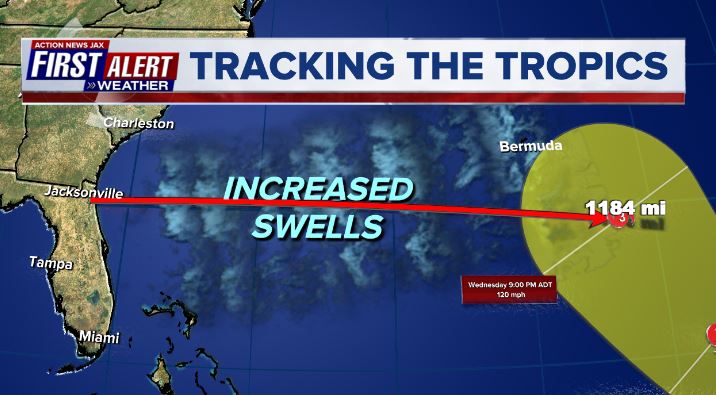
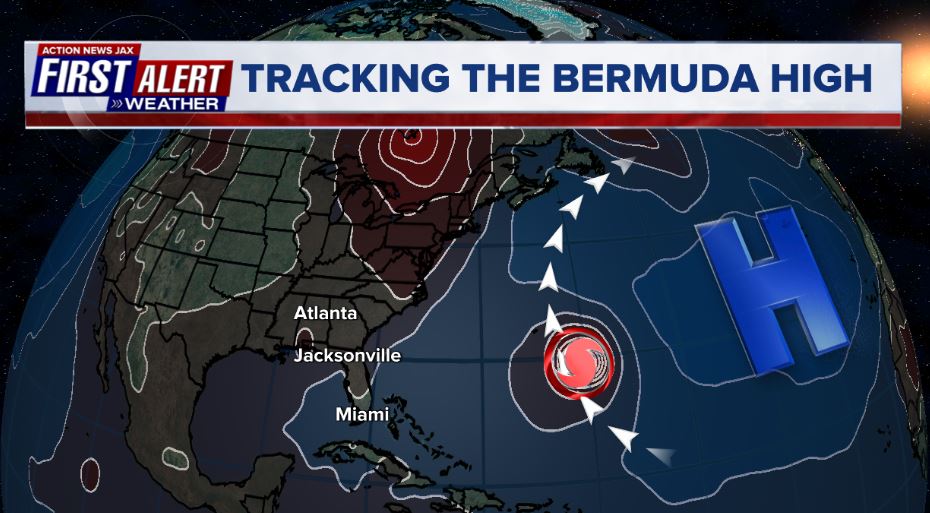
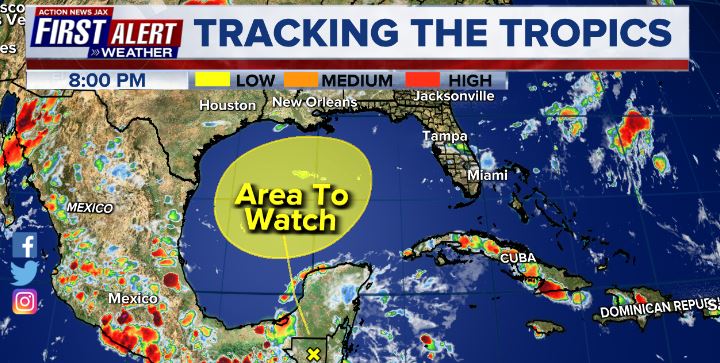
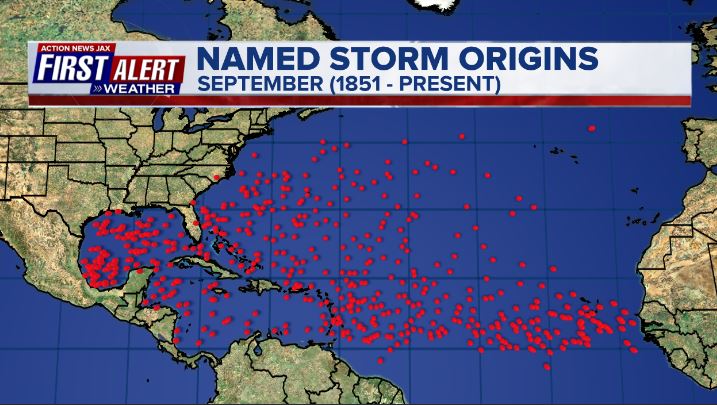

:quality(70)/cloudfront-us-east-1.images.arcpublishing.com/cmg/FXTUNGOH5JDMRLTAWC4BG3TTEY.jpg)
:quality(70)/cloudfront-us-east-1.images.arcpublishing.com/cmg/WJVERMTCKFHFPBF2LNONHSDB4M.jpg)
:quality(70)/d1hfln2sfez66z.cloudfront.net/04-22-2024/t_ce7544ba150e4c27a8bfb667adb18b39_name_file_960x540_1200_v3_1_.jpg)
:quality(70)/d1hfln2sfez66z.cloudfront.net/04-22-2024/t_e2f2015e1b294b60b1f965b622dca19a_name_file_960x540_1200_v3_1_.jpg)
:quality(70)/d1hfln2sfez66z.cloudfront.net/04-22-2024/t_f5f241e0aad44a77a07c6df361d48410_name_file_960x540_1200_v3_1_.jpg)